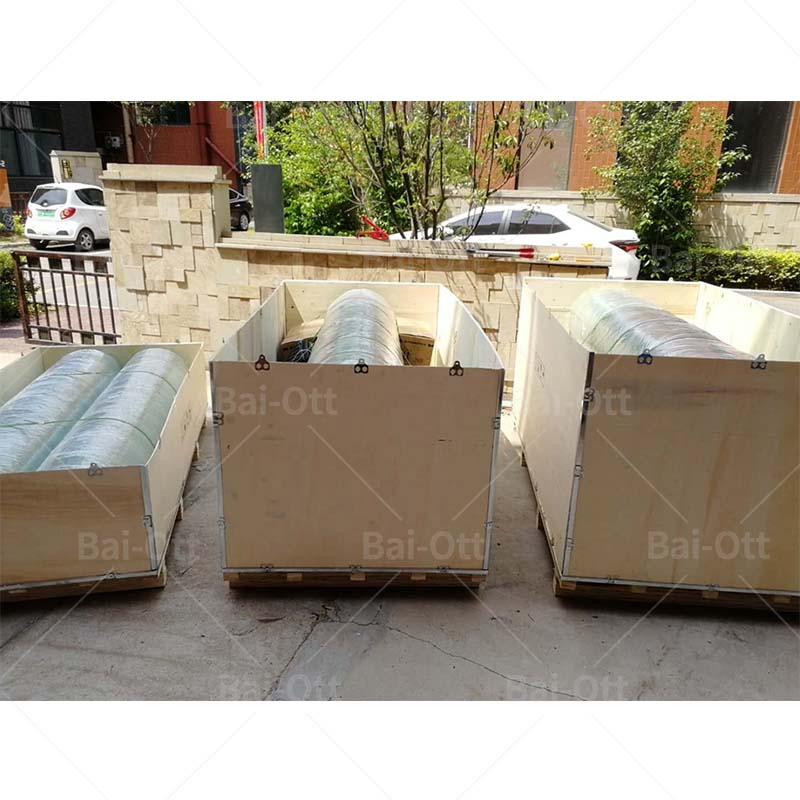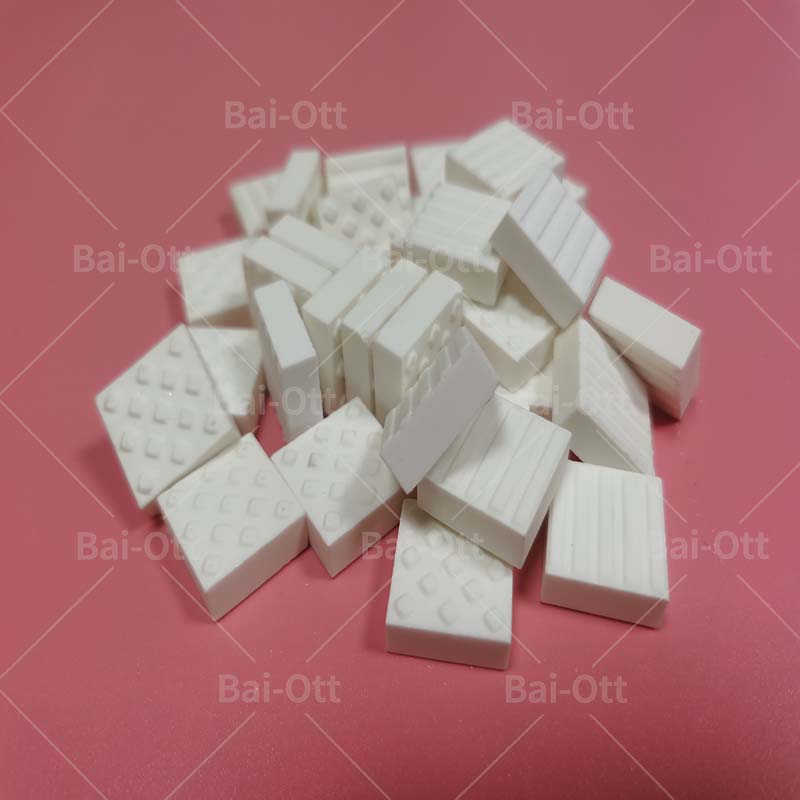Tail Drum Ceramic Conveyor Pulley Lagging
Brand: BAI-OTT or OEM
Thickness: 12mm,15mm,20mm or Custom
Feature: Wear-Resistant
Installation: Head Drum and Tail Drum
CN Bonding: Available
Material: Ceramic+Rubber
Sample: Provide
Product Inspection:Available
MOQ: 1 Square Meter
Lead time:Ready to ship in stock
View more Pulley Lagging Sheet from BAI-OTT
Description
Tail Drum Ceramic Conveyor Pulley Lagging
Ceramic pulley lagging is used for drum lagging in wet and muddy conditions, which has the characteristics of high friction, anti-slip, high wear-resistant, heat resistant. And can provide distinguished grasping force between driving roller and conveyor belt, accommodate to all kinds of muddy, humid, and sticky working environment, also work well to solve severe wear and slipping problems of the drive wheel, tailwheel, tension pulley, and roller, ensuring the conveyor belt running well. And especially suitable for the muddy and damp difficult conveyor working environment because the ceramic is strong enough to protect the tiles and conveyor pulley.
Coal washing plant, Cement plant, Metal factory, Metallurgical plant, Crusher like ceramic pulley lagging because their conveyor tile location in the damp places, the ceramic outstanding in high wear-resistant can better belt the conveyor running.
| Order No. | Product Name | Dimension(mm) |
| 3831250 | Ceramic Pulley Lagging Sheet | 12*500*10000 |
| 3831550 | Ceramic Pulley Lagging Sheet | 15*500*10000 |
| 3832050 | Ceramic Pulley Lagging Sheet | 20*500*10000 |
Advantage
Ceramic blocks containing 95% aluminum oxide embedded into rubber sheet.
Single or double,plane or convexity ceramic can be chosen.
Hardness same as conveyor belt so better friction and protection to the belt.
Abundantly elastic basement rubber can protect conveyor belt well.
Ceramic coverage about 38%.
The drum does not need to be disassembled and can be constructed on site.
The operation is fast and convenient, namely stick and use.
Extremely long wear life.
High efficiency and low cost.
Specifications
Ceramic rubber pulley lagging can solve the problem of conveyor belt slipping, while conventional one cannot. In fact, the friction coefficient of ceramic roller coating is two to four times that of rubber, whether it is wet, muddy or dry. Ceramic rubber pulley lagging is more wear-resistant than ordinary one. The normal service life of Ceramic rubber pulley lagging can reach more than 8 years, it has more versatility in various practical application environments and increases the service life of the roller. At the same time, it also prolongs the service life of the conveyor belt. Ceramic roller coating is an economic choice to improve the productivity of the conveyor system.
| Type | Thickness/mm | Width/mm | Ceramic coverage rate | CN Bonding layer | Drawing |
| Super wear abrasive | 12/15/20 | ≤500 | 38% | Yes or no | Have |
| Economic | 12/15/20 | ≤500 | 20% | Yes or no | Have |
| No ceramic | 12/15/20 | ≤500 | 0 | Yes or no | Have |
| Ceramic Block Data | Rubber Part Data | ||
Aluminum Oxide(min)Al2O3 | 92% | Polymer | NR/SBR |
Specific Gravit | >3.7g/cm3 | Specific Gravity | 1.13±0.03 |
Hardness(Moh ,s) | >9t | Shore Hardness°A | 60±5 |
Tensile Strength(Mpa) | ≥320Mpa | Elongation at break%Min | 450% |
Comp.Strength(Mpa) | ≥2000 Mpa | Tensile Strength | 17.5N/mm2 |
Flexural Modulus(Mpa) | 32.0 | Abrasion Loss | 150mm2 at 10N |
Water Absorption | 0% | ||
Conveyor Pulley Installation Procedure:
Step 1:
Put a double sides retainer strip across pulley face and parallel to the shaft,then clamp strip in place.
Step 2:
Plug weld after keep strip flat and parallel.
Note: Don't produce overheated welding in the following steps
Step 3:
Position rubber board under lip and flush against retainer strip.Keep the strip parallel to board and clamp it by lock wrench.
Step 4:
Put another strip and keep 0.8mm distance between board and strip then fix it on pulley by lock wrench.
Step 5:
Clamp in place and plug weld through 3 holes as above picture shown after confirm aligning and then weld through alternate holes from center out.
Step 6:
Repeat sequence until all except the last board is in place.
Step 7:
According to the pulley diameter, installation will be finished if without residual rubber boards.
Step 8:
Measure the residual distance and clip the last board into suitable dimension by cutter and nicking tool.Use strip to fix both sides of the last board is okay.
Step 9:
Note: Cut the rubber back steel board by cutter and polish machine and then cut rubber by nicking tool to prevent rubber damage caused by overheated cutter.
Step 10:
After finish the installation please make rust prevention in welding area.



















